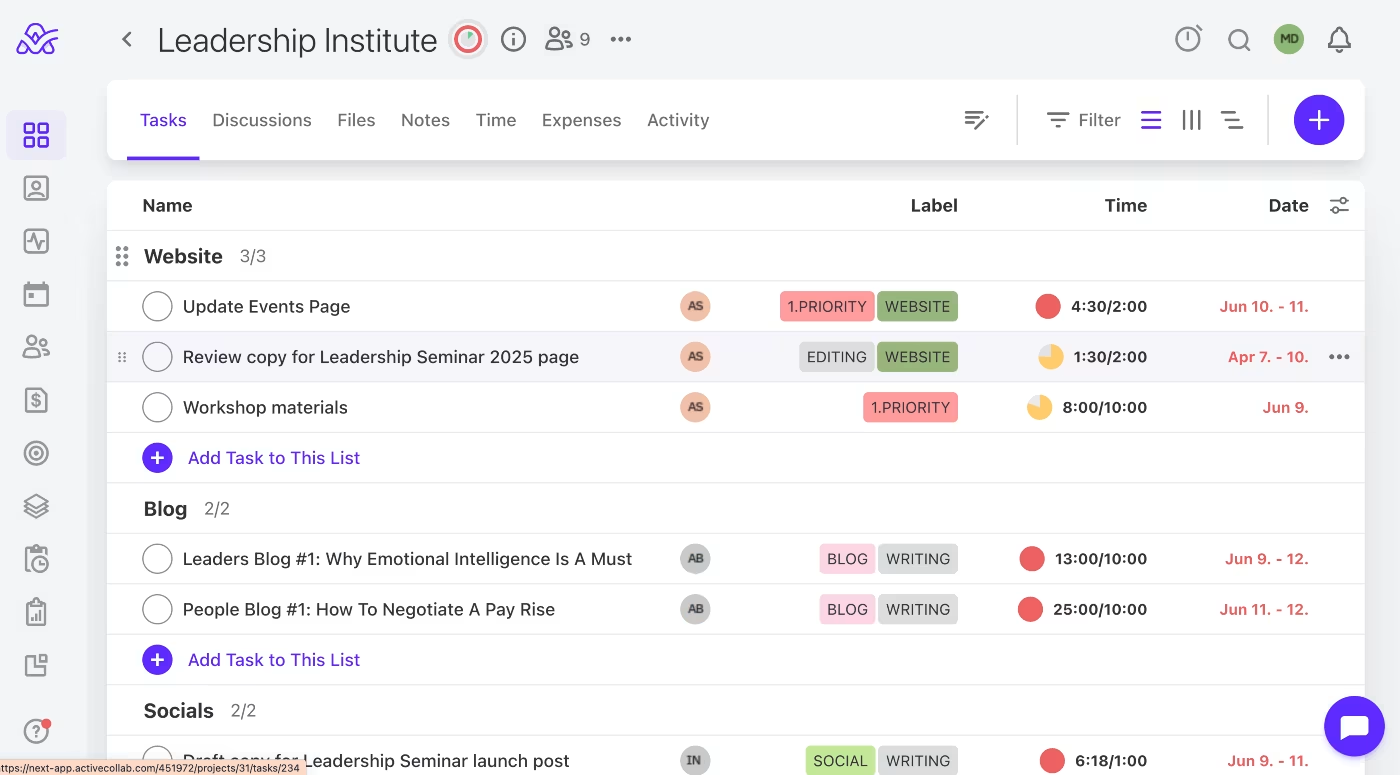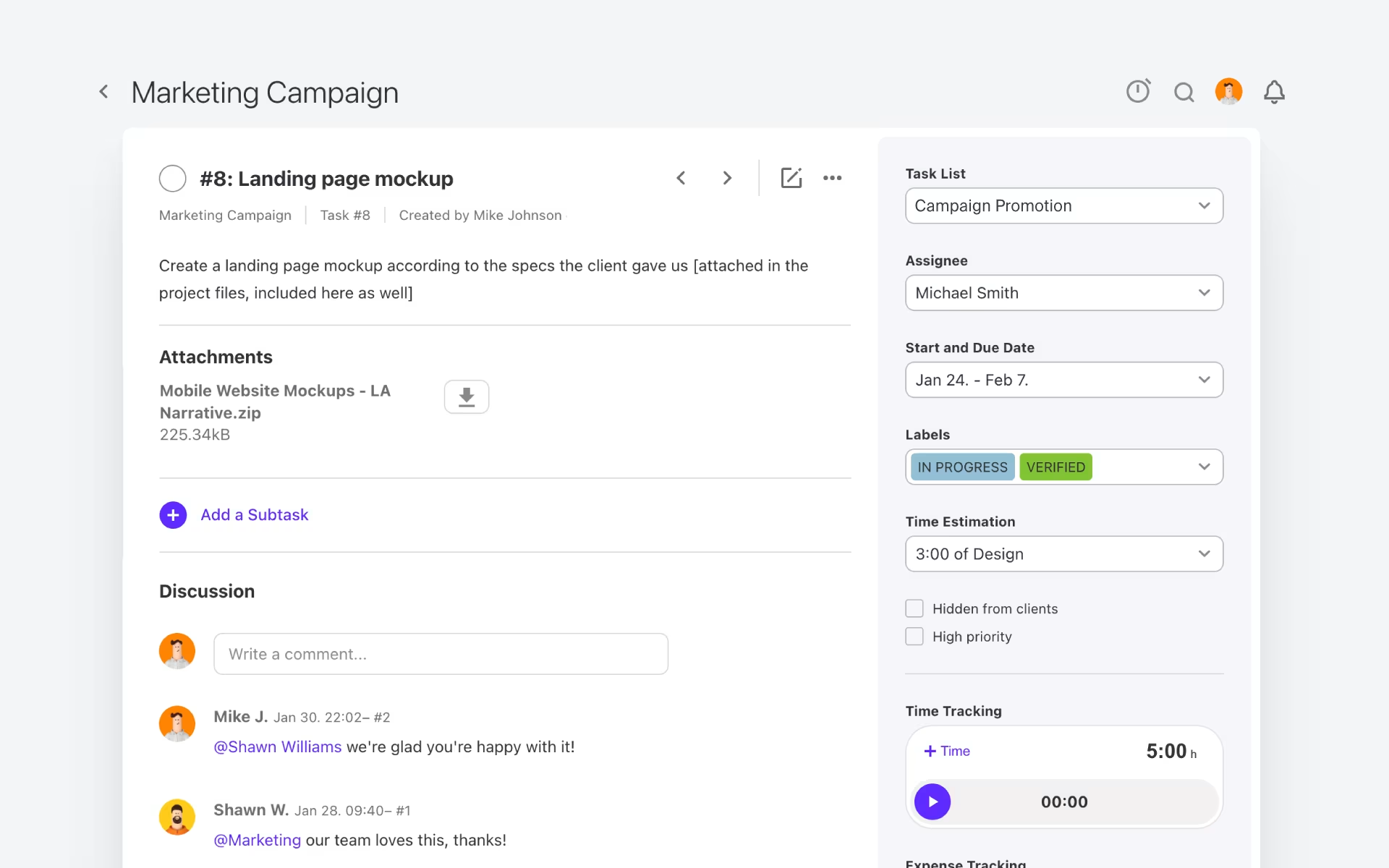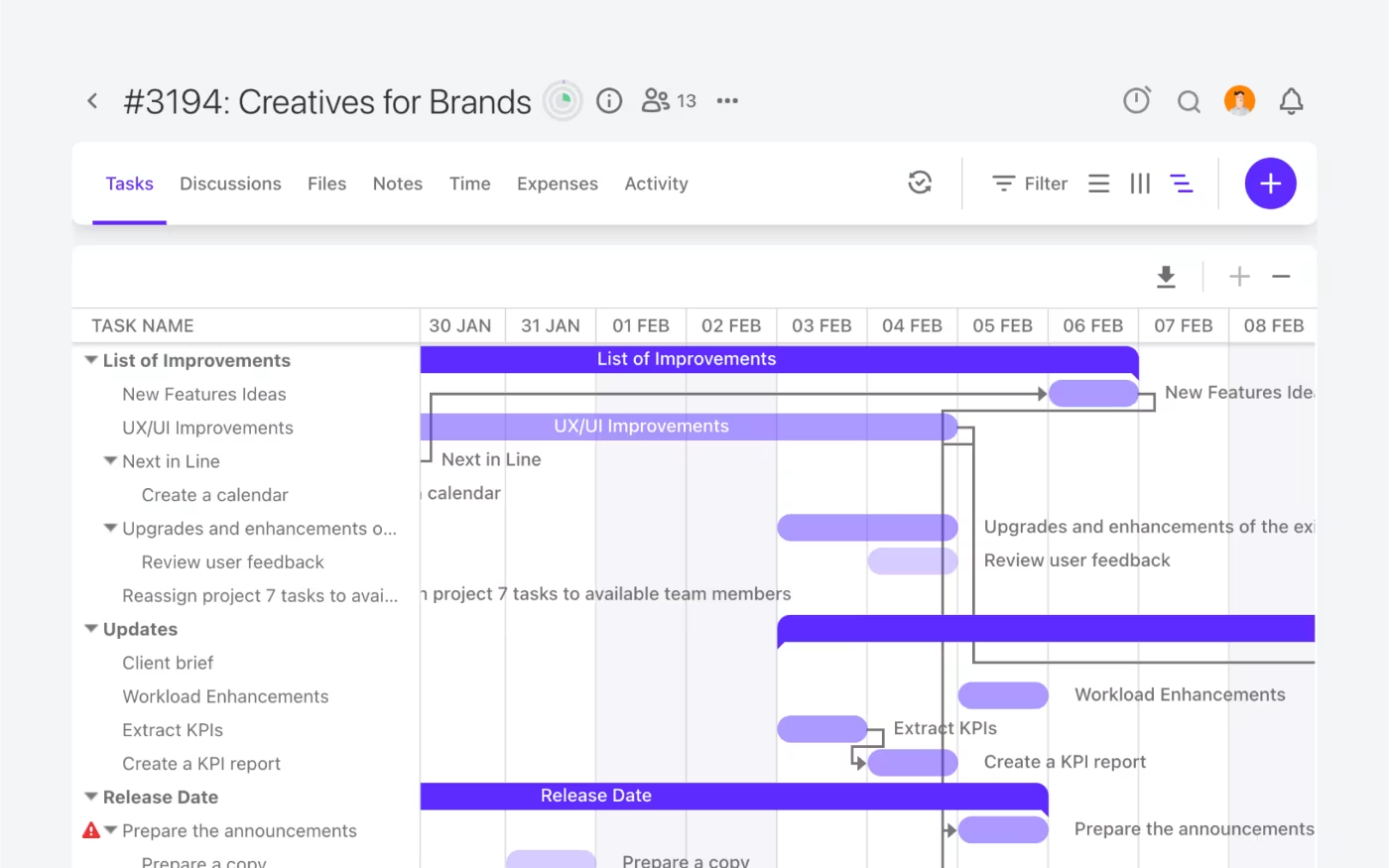Picture this: your project team has been working tirelessly for months, burning through budget and hitting every milestone on schedule. But when it comes time to show results, stakeholders are confused about what they’re actually getting. Sound familiar?
This scenario plays out in organizations worldwide because teams fail to properly define and manage their project deliverables.
Project deliverables form the backbone of successful project execution. Yet, many project managers struggle to identify, track, and deliver them effectively. Whether you’re managing a marketing campaign, leading a software initiative or overseeing a construction project, understanding what deliverables are and how to manage them can make the difference between project success and costly failure.
If your team has faced the deliverables anomaly problem, you’re in the right place. Read on as we take a closer look at what project deliverables are, why they matter, and how you can identify them accurately to help your project succeed.
What are deliverables in project management
Every project produces (a.k.a. delivers) something. Whether it be tangible (a design for ad) or intangible (a social media content calendar ), project deliverables are valuable outputs produced by your team in the journey to project completion.
They are all the “whats” in your project’s equation. The specific items that demonstrate progress toward achieving the overall project objectives and stakeholder or client expectations.
Unlike the tasks or activities you create and assign to your team via a project management software tool like ActiveCollab, which focus on the “how”, deliverables represent the actual outcomes your project team creates.

They serve as measurable evidence of project completion and provide concrete value to clients, stakeholders, or your organization.
For something to be considered a deliverable in project management it must be:
- Specific and measurable – You can clearly identify when it's complete
- Agreed upon by stakeholders – Everyone understands what constitutes as “done”
- Valuable – It contributes meaningfully to the project's ultimate purpose or goal
- Documented – There’s a clear record of requirements and acceptance criteria for each project deliverable
Project deliverables can include digital outputs like software applications or websites, physical products like buildings or equipment, or intangible results like improved processes, enhanced skills, or documented procedures.
What matters most is that each deliverable directly supports your project’s core objectives and can be verified against predetermined criteria.
Types of project deliverables in project management
Understanding the different types of project deliverables helps you group and manage them more effectively. Project deliverable can be boxed into one of six categories:
- Internal deliverables: Outputs created for consumption within your organization, such as project plans, risk assessments, and internal project deliverables like documentation
- External deliverables: Results intended for clients or external stakeholders, including completed products, services, or external project deliverables like marketing campaigns
- Process deliverables: Interim outputs that mark progress toward the final goal, such as prototypes, design specifications, or testing reports
- Product deliverables: The ultimate outputs that fulfill your project’s main objective
- Tangible deliverables: Physical, measurable items like hardware, printed reports, or equipment
- Intangible deliverables: Non-physical outputs such as software, strategic recommendations, or improved processes
Examples of project deliverables across service industries
Understanding what project deliverables look like in practice can help you better identify and define them for your own projects.
Here are some concrete project deliverables examples across various service business sectors:
| Industry | Internal Deliverable | External Deliverable |
|---|---|---|
| Creative | Creative brief, mood boards, draft scripts or sketches | Final video or designs for client approval, campaign concept presentations, print-ready files |
| Marketing | Campaign strategy document, buyer persona, content calendar | Social media posts, blog articles, landing pages, marketing collateral |
| Construction | Safety assessments, progress reports | Completed building, inspection certificates |
| Consulting | Research findings, methodology documents | Strategic recommendations, training workshops |
| Software Development | Product Requirement Document (PRD), sprint roadmap, code review reports | Project timeline, UX/UI prototypes for client approval, deployed application |
How to identify project deliverables
Successfully identifying project deliverables requires a systematic approach that starts with thorough analysis of your project scope and objectives, and involves all relevant stakeholders from the beginning.
Identifying project deliverables also helps project managers get their head around all the individual project tasks, that will produce all the deliverables so they know how much work the project will actually involve.
1. Analyze project scope, clarify the project's goal
Begin by thoroughly analyzing project scope and objectives to understand what specific outcomes are required for project success.
Your client or campaign brief, project charter or project scope statement will provide the foundation, but you’ll need to dig deeper. It's a good idea to speak to your clients and stakeholders so you uncover the core purpose that may not have been successfully or explicitly stated in official documents.
2. Use a Work Breakdown Structure, divide goals into single deliverables
The next step is to use the Work Breakdown Structure (WBS) methodology to break down large project or campaign goals into smaller, manageable deliverable components.
This systematic breakdown gives you a clear visual of how individual deliverable items connect to one another and feed into each milestone, as well as the final finished product or initiative launch.
It also makes sure you don’t miss critical outputs and makes it easier to assign ownership, estimate effort, and track progress throughout the project.

3. Share deliverables with collaborators or stakeholders, get feedback
Share your initial draft deliverables list with key collaborators and stakeholders to get their views, thoughts and suggestions.
You can do this via a document link where you ask everyone to provide feedback in their own time or you can have a discussion or brainstorming meet where you can capture all necessary deliverable specifications.
In ActiveCollab, you can create a discussion with the click of a button. Then simply go and:
- Name your discussion – Let's call it "Deliverables for project X")
- Select subscribers – Choose who you want to participate in the discussion. Add all the people you think will offer valuable perspectives and representatives from teams that will collaborate on the project deliverables
- Add or hide clients – You have the option to keep your clients included in the discussion, or you can hide a certain if you'd like to exclude clients (only available with Client and Client + roles)
- Add attachments – If you need discussion participants to view documents, add them to attachments section so they don't have to go looking for them in various drives or files
- Pin to top – Important or time-sensitive discussion? Pin it so it gets all the attention it deserves

This step can make the difference between delivering outcomes that were promised and missing the mark completely. Often, different stakeholder or specialists have perspectives and valuable prior experience that can inform your project and help increase it's chances of success.
A lot of the time, you'll notice these discussions can bring up some interesting revelations on what can and can't be done. Many times, these discussions can lead to a completely revised list of project deliverables, that are less risk prone and have a greater chance of success.
4. Finalize deliverables, link to KPIs
When you've gathered all the feedback you need and made adjustments to you full list of deliverables, external and internal, it's time to map out your deliverables, and link them to key performance indicators (KPIs).
This step ensures alignment with business objectives and measurable success criteria.
Each deliverable should contribute to broader project goals, and you should be able to measure its impact on overall project success.
Consider these questions when identifying deliverables:
- What tangible outputs must this project produce?
- What documentation will clients/stakeholders need?
- What training or knowledge transfer is required?
- What processes or systems need to be updated?
- What compliance or regulatory requirements must be met?
Why project deliverables matter for service businesses
When you are running a project, even the slightest change in your deliverables can create a ripple effect throughout your entire plan. For example, one missing deliverable can delay subsequent tasks and throw off your entire project timeline.
According to PMI, while 48% of projects are deemed a success in terms of delivered value (based on the effort and expense put in), a whopping 40% only deem their projects a partial success, while an unfortunate 12% feel it was a complet failure.
Poorly defined deliverables and unclear stakeholder and client expectations are what makes up the core of failed projects where deliverables don't work towards fulfilling the intended purpose of the initiative or project.
When established properly, clearly defined and tracked project deliverables can help make sure you:
- Set realistic project expectations: When stakeholders understand exactly what they’re getting (and what they’re not), it becomes much easier to manage expectations and prevent the endless “just one more thing” requests that can derail project timelines.
- Reduce delays and missed deadlines: With deliverable management, you are better equipped to organize your project tasks, as well as to prioritize them, so that all of the project’s objectives are met in a timely fashion.
- Improve quality of work: With clear deliverable specifications, your project team can focus on meeting quality standards rather than trying to interpret vague deliverable requirements.
- Decrease uncertainty and confusion in the project: One of the main generators of project stress is unclear deliverables. With proper deliverable identification and management, your project team will know exactly what they need to produce.
- Increases client satisfaction & trust: When your deliverables are consistently meeting expectations, clients feel confident in your team’s ability to deliver value and achieve business, campaign and project goals.
- Resolve conflicts between different project teams: When you are running multiple work streams with different teams across you business or team, there is bound to be some overlap. Managing your deliverables enables you to circumvent issues such as competing priorities or resource conflicts.
- Track milestones effectively: Each major deliverable typically represents a significant milestone, allowing your project manager to assess whether the project is progressing according to schedule and budget constraints.
- Identify potential risks and bottlenecks: When a deliverable falls behind schedule, it signals that you need to investigate underlying issues – whether that’s resource constraints, scope creep, or technical challenges that require attention.
Well-managed project deliverables serve as the backbone of successful project execution, providing multiple layers of value that extend far beyond simple task completion.
Deliverables also provide clear milestones that help project teams track progress and maintain momentum throughout the project lifecycle. Instead of wondering “Are we making progress?” your team can point to specific, completed outputs that demonstrate forward movement to clients.

ActiveCollab: Brainstorm, identify & manage project deliverables
The key to successful deliverable management lies in treating them as integral parts of your project strategy rather than afterthoughts. For service businesses, clearly defining and managing deliverables early on, is essential for sticking to schedule, staying in sync with clients and wrapping up the project with a profit.
Without the right tools, even the most skilled project managers and teams can veer off course, risking team misalignment, rework and stakeholder and client confusion.
That's where ActiveCollab comes into the mix. As a purpose-built project management tool for marketers, designers, creatives and developers, it gives project managers the control they need to see every single project through to winning finish line.
With intuitive task management, built-in discussions, project timeline views and team collaboration options, you can establish deliverables accurately, and translate them into actionable tasks. Select a task owner, set a due date and track every pice of work from kick-off to client sign-off!
Need to clarify deliverables? Use discussions to loop in internal team collaborators or external clients and stakeholders. Need to track milestone progress? Select a timeline view of your project tasks and see where you're at.
Want to bridge the gap between planning, execution, deliverables and KPIs for your projects?
Don't dwell in chaos. Dive into ActiveCollab: the go-to project management software platform for service businesses managing project around the globe. Sign up for a 14-day free trial or book a demo with one of our people. You won't regret it (promise!)
